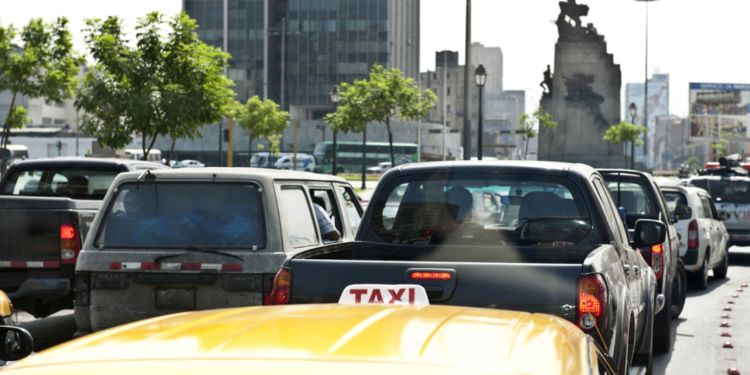
As a huge sprawling metropolis, learning to get around Lima is vital if you intend to live in the capital city of Peru. Lima's transport system includes different types of buses, an expanding system of electric trains, similar to a metro system, and taxis.
Parts of the city are developing cycle lanes, with cycling growing in popularity. All of these are very affordable and safe modes of transport, giving you different options for moving around the city.
Bus
Like elsewhere in the country, the bus is the most popular means of transport in Lima. Buses consist mostly of privately-owned large buses, medium-sized buses known as micros, and small vans known as combis ' these are available all around the city. In general, you will pay between 0.50 and 3 New Peruvian Soles (PEN), depending on the distance travelled. Destinations are indicated on the top of the windscreen while schedules are briefly indicated on the side (the most important stations or stops).
Passengers are likely to hail and get off the bus anywhere, be it between two bus stops, at traffic lights, or at a crossroads. You will also find microbuses which are smaller and older than combis.
Metropolitano
The Metropolitano is a bus which is available on a single route, with its own dedicated bus lanes that run adjacent to, or sometimes in the middle of the highway (via expresa). The solitary route links the North to the South of Lima, connecting Barranco, Miraflores, San Isidro, Lice, and the city centre, with plans to continue to Independencia and Comas. Six further routes are also planned.
Access is via stops at dedicated platform-style bus stations. You pay for the Metropolitano at a machine or counter at the station, via a rechargeable magnetic card which costs around 4.5 PEN. Once your credit has been used, you can recharge the card with a minimum of 5 PEN. As the card is not nominative, you can use it to pay the fare of several passengers at a time. In general, it will cost 2 PEN per person. The Metropolitano is available from 6 am to 9.50 pm, and is a very popular mode of transport, especially during rush hour when you can expect to line up before boarding. However, it's worth the wait as it then zooms past all the traffic backed up on the highways.
Tren electrico
Lima has long lacked a modern subway network like other metropolitan cities. The tren electrico is slowly changing that with Metro Line 1, an elevated viaduct, and the longest in the Americas at the time of opening, commencing operation in 2011. It currently serves 26 stations, connecting Villa El Salvador in the south of the city to Bayóvar in the north.
Line 2 is under construction, and concessions have been awarded for the construction of Lines 3 and 4, with a 5th also planned.
Taxi
Like in most Peruvian cities, you can find taxis anywhere in Lima. Formal taxis have a lit sign on their roof while non-formal taxis are indicated by a sticker on the windscreen. In general, fares should be negotiated and agreed with the driver before starting the journey. Lima has several taxi applications in use, including Uber, which will work with an existing account if you have one. If you've recently arrived in Lima, and your Spanish is not great, ordering a taxi via one of these apps is a great option, as you can type in the destination and pay by credit or debit card. There are also local taxi companies that can be called to make advanced bookings.
Bicycle
Biking is not traditionally a common mode of transport in Lima, but the conditions are there for this to improve, as the city is flat and dry. Cyclist should beware of the chaotic traffic and drivers with little respect for cyclists. Cycle lanes are slowly expanding, and there is currently a good network in Miraflores and San Isidro.
Useful links:
We do our best to provide accurate and up to date information. However, if you have noticed any inaccuracies in this article, please let us know in the comments section below.






